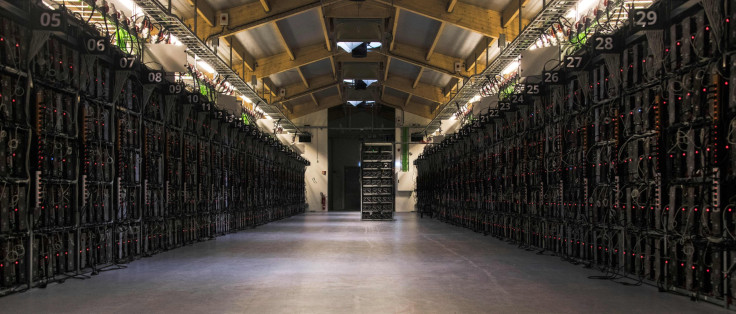How Web3 Is Overturning The Internet Status Quo
Today it's almost taken for granted that the Internet is controlled by a handful of tech behemoths that seem to amass more and more power every day. It's easy to forget that, when these titans first arrived on the scene, each of them was considered a disrupter, a revolutionary, an upstart. Now they are the establishment.
Since its birth in 1983, the Internet has evolved from an obscure and clunky tool used by a select few into a vast network integral to every corner of our lives. This destiny first became apparent during the dot-com boom of the 1990s. And although many naysayers were quick to self-congratulate during the ensuing bust, the downturn proved no more than a healthy pruning that readied the Internet for a new era of growth.
This next phase of Internet evolution, dubbed Web 2.0 in 2005 by Internet guru Tim O'Reilly, produced the trends that now dominate our lives: mobile-centric e-commerce, social media, user-generated content and video streaming. It also set the stage for the reign of the FAANGs: Facebook, Apple, Amazon, Netflix and Google.
Together, these giants offer us forms of connection, entertainment and instant gratification we could only have imagined a decade ago. But because their business models are based on the large-scale monetization of data and centralized control of networks, our reliance on these services has also handed them enormous power: over our time, our wallets and our personal information.
That stranglehold may seem unbreakable at this point. But behind the scenes, away from debates about monopolies, privacy and free speech, a new incarnation of the Internet is emerging. Forces are quietly mustering for a new revolution — one whose very structure is designed to prevent such concentrations of profit and control from shaping the future.
The key to this new iteration is decentralization. Its foundation is blockchain technology.
A quiet revolution
While the concept of blocks of information shackled together in a tamper-resistant way dates back to 1991, it wasn't until 2009 that Satoshi Nakamoto, the pseudonym for the developer (or developers) of Bitcoin, set up the first blockchain to allow trading in the new currency. Now there are hundreds. On each blockchain, peers can exchange economic value — work, content, assets — without intermediaries.
This opens up the potential for a new kind of Internet — Web 3.0. Because blockchain transactions are anonymous and processed by a distributed network of many computers, known as nodes, users no longer need to cede control of their data to a central authority. Meanwhile, the links between blocks produce a record that is resistant to hacking and manipulation.
Protocols powered by the many
There are a multitude of new ideas for how to use the power of decentralization to offer tools and services that eschew centralized authority, and are thus more affordable and accessible. And since protocols built on the distributed Internet are powered by hundreds or even thousands of computers, they are subject to neither single points of failure nor single points of control. This makes them both more stable and more secure.
As part of the Web3 community's commitment to democratization, many of these projects are led by Decentralized Autonomous Organizations (DAOs) — decentralized corporations governed by egalitarian communities rather than boards and executive hierarchies. Built on principles of self-sustaining growth and community governance, they are already having major real-world impacts.
Mirror, a community-run publishing protocol, puts power in writers' hands. Because it is built on the Ethereum blockchain, the authorship and provenance of each piece of content are indelibly recorded. Writers can also collaborate on projects, turn their work into non-fungible tokens (NFTs) for auction, or even bankroll efforts by issuing their own tokens.

The user-generated music platform Playdj.tv uses decentralized infrastructure to cater to a different kind of creator at rates that enable it to be competitive with YouTube. Its platform enables DJs to set up their own live streams for their sets, which they can use to earn money and interact with fans all over the globe — a boon during the pandemic, when clubs and private party venues were forced to shut their doors.
The team behind Arweave has built a distributed hard drive that offers a permanent repository for all kinds of information and data. Then there's The Graph, which helps make sense of all this by allowing fast, private and secure queries of its vast store of data about the Web3 universe.
New breeds of distributed financial systems are on the rise as well, including decentralized finance (DeFi) platforms where people can earn rewards by "staking" assets and performing key tasks on a network. The number of decentralized cryptoasset exchanges (DEXs, in the industry parlance) has ballooned in the past two years, capturing some market share from their centralized counterparts (CEXs) with their promise of greater anonymity, safety and security.
Total trading volume on these platforms surged to a record $172 billion in May, more than twice the $80.2 billion record set just three months before. Protocols such as Uniswap have been at the forefront of this growth.
There are scores and scores more out there or percolating in the imaginations of developers, many of which will become the building blocks for a new Internet and a new economy. Some projects will inevitably fall by the wayside as Web3 grows to maturity, but many will survive and become foundational tools for the industries and customer bases they serve.
The difference this time is that these tools are governed and powered by their own user communities, rather than by the leaders of a small circle of massive corporations.
(Doug Petkanics is the founder and CEO of Livepeer, a decentralized infrastructure that enables developers to build stable and scalable video streaming platforms)
© Copyright IBTimes 2024. All rights reserved.






















